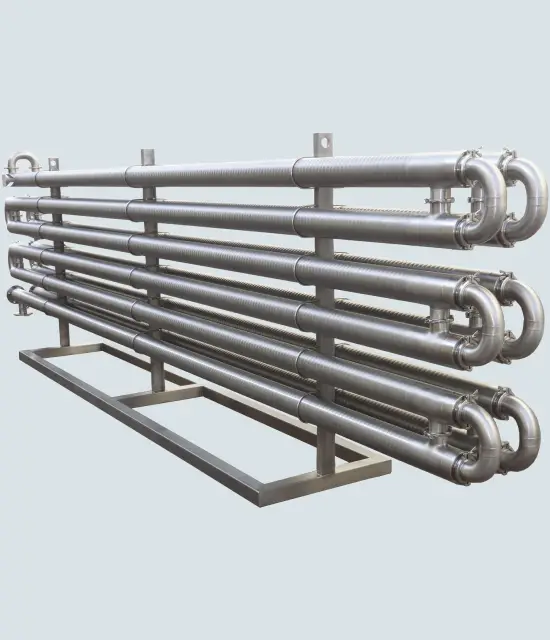about
Tubular heat exchanger
As best tubular heat exchanger manufacturers design these systems to maintain precise temperature control, significantly reduce energy consumption, and deliver consistent heating or cooling in even the most demanding industrial settings. A tubular heat exchanger represents one of the most trusted designs in thermal management technology, using precisely engineered tube arrangements to transfer heat efficiently between separate fluid streams. This proven approach works beautifully across numerous industries—from chemical processing and oil refineries to food production facilities and building climate control systems. Their ability to maintain performance even when conditions fluctuate explains why so many engineers rely on tubular heat exchangers for critical processes.
Purpose of the Tubular heat exchanger
As tubular heat exchanger manufacturers we are sure to one exceptionally well. We ensure that moves heat from one fluid to another without letting them mix. At TAE we have perfected these compact, adaptable systems to handle everything from gentle food processing to aggressive chemical applications—making them the versatile workhorses of thermal management.

Working Principle of a
Tubular Heat Exchanger
Heat Transfer
- The basic process in any tubular heat exchanger is thermal energy passing through conductive tube walls. When hot fluid passes through the precision-made tubes from quality heat exchanger tubes manufacturers, heat naturally flows to the cooler fluid on the opposite side, according to basic thermodynamic principles.
Fluid Flow
- These systems handle two distinct fluid streams that enter via dedicated inlet ports. In traditional design of choice for seasoned tubular heat exchanger manufacturers, the warmer medium passes through the inner network of tubes while the cold fluid passes through the bounding shell space.
Counter flow Design
- Most effective configurations of the tubular heat exchanger employ counter-current flow, in which fluids travel in directions that are opposite to each other through the system. This strategic design optimizes the temperature difference across the two media through the entire exchanger, increasing thermal transfer efficiency considerably.
Components of Tubular heat exchanger
Inlet and Outlet Connections
These fittings allow for the entry and exit of the fluids, ensuring efficient flow through the heat exchanger.
Tube Sheet
The plates at each end of the shell that support the tubes.
Tubes
The individual tubes within the bundle that carry one of the fluids.
Benefits of Tubular heat exchanger
High Heat Transfer Efficiency
Provides a large surface area for effective heat exchange.
Versatility
Suitable for a wide range of fluids and adaptable to various operating conditions.
Compact Design
Ideal for applications where space is limited.
A tubular heat exchanger is a type of heat exchanger. If you have any more questions or need further details, feel free to ask!
Testimonials
Recently we bought a Radiators for our Generator. The Product Quality is Excellent .This Company produces custom made Radiators and Spares too. High Quality Products and Service Support.
krishna
CLEANTEK
We got support from ark engineering wonderful work done.He given idea for money save in genset. Ark engineering owner wonderful person.i will strongly recommend to ark engineering.
R.Prasannavenkatesh
Laser Experts India
Coimbatore
We have taken the services of the ark engineering for the service of our genset radiators.it was great Service at a better price .really professional and technical.
Suresh V
FAQ'S
What are common issues associated with tubular heat exchangers?
Common issues include fouling, corrosion, and leaks, which can impact heat transfer efficiency. Experienced tubular heat exchanger manufacturers address these challenges through material selection, design optimization, and maintenance recommendations to ensure long-term performance.
Can tubular heat exchangers operate at high pressures and temperatures?
Yes, they are designed to withstand high pressures and temperatures, but specific materials and designs must be chosen based on the application requirements.
What are common issues associated with tubular heat exchangers?
Common issues include fouling, corrosion, and leaks, which can impact heat transfer efficiency.